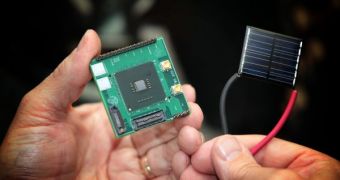At the Intel Developer Forum, the Santa Clara chip maker unveiled the first details regarding its research into low-power processors able to operate near their threshold voltage (NTVP), the actual voltage at which transistors begin conducting current.
The research paves the way into building ULV chips delivering the same performance as today's CPUs while using just a fraction of the power.
These can be used in smartphones, tablets, notebook computers, and any other devices that need to provide long battery life as well as for creating highly efficient desktop and workstation PCs.
In the last couple of years, processors have reached a wall as far as their operating voltages are concerned.
Currently, both Intel's and AMD's CPUs work at voltages above 1V since, even if actual transistor switching happens well below this voltage, it's very difficult to accurately detect the transistor's state (off or on) at anything bellow this level.
The main issue is differentiating between an actual transistor switch and noise, and this is where Intel's NTV technology comes into stage.
While Intel hasn't provided any details regarding how they managed to get past this limitation, it did showcase a processor built using NTVP technology which required less than 10mV to operate in an idle mode and between 400 and 500mV in load.
The CPU is based on the Pentium architecture and while it will never go into production, the techniques used for developing it could be applied to future Intel designs.
"Since 2006 Intel and the IA developer community have worked in partnership to realize the potential of multi- and many-core computing, with accelerating impact beyond high-performance computing to solving a wide range of real-world computing problems on clients and servers,” said Justin Rattner , chief technology officer of Intel, during his IDF keynote.
“What we have demonstrated today only scratches the surface of what will be possible with many-core and extreme scale computing systems in the future,” concluded Rattner. (via AnandTech)

 14 DAY TRIAL //
14 DAY TRIAL //